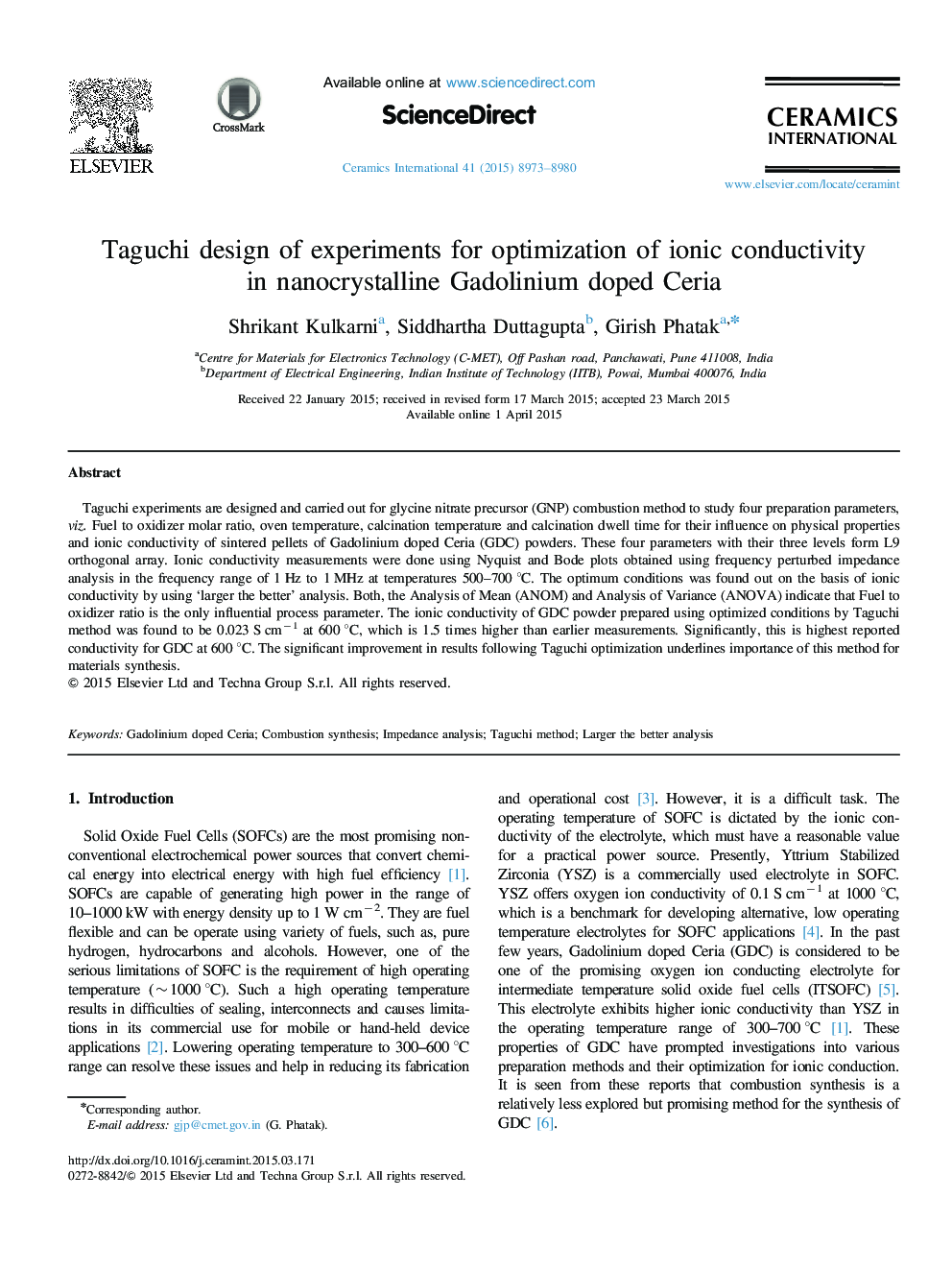| Article ID | Journal | Published Year | Pages | File Type |
|---|---|---|---|---|
| 10624658 | Ceramics International | 2015 | 8 Pages |
Abstract
Taguchi experiments are designed and carried out for glycine nitrate precursor (GNP) combustion method to study four preparation parameters, viz. Fuel to oxidizer molar ratio, oven temperature, calcination temperature and calcination dwell time for their influence on physical properties and ionic conductivity of sintered pellets of Gadolinium doped Ceria (GDC) powders. These four parameters with their three levels form L9 orthogonal array. Ionic conductivity measurements were done using Nyquist and Bode plots obtained using frequency perturbed impedance analysis in the frequency range of 1 Hz to 1 MHz at temperatures 500-700 °C. The optimum conditions was found out on the basis of ionic conductivity by using 'larger the better' analysis. Both, the Analysis of Mean (ANOM) and Analysis of Variance (ANOVA) indicate that Fuel to oxidizer ratio is the only influential process parameter. The ionic conductivity of GDC powder prepared using optimized conditions by Taguchi method was found to be 0.023 S cmâ1 at 600 °C, which is 1.5 times higher than earlier measurements. Significantly, this is highest reported conductivity for GDC at 600 °C. The significant improvement in results following Taguchi optimization underlines importance of this method for materials synthesis.
Related Topics
Physical Sciences and Engineering
Materials Science
Ceramics and Composites
Authors
Shrikant Kulkarni, Siddhartha Duttagupta, Girish Phatak,
